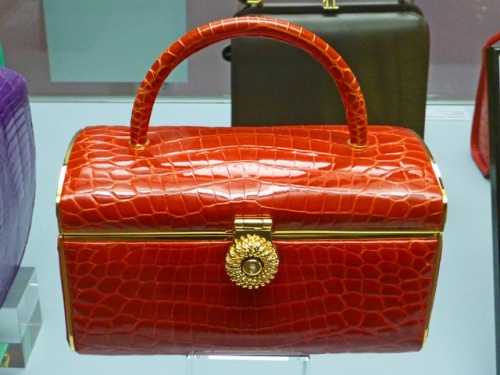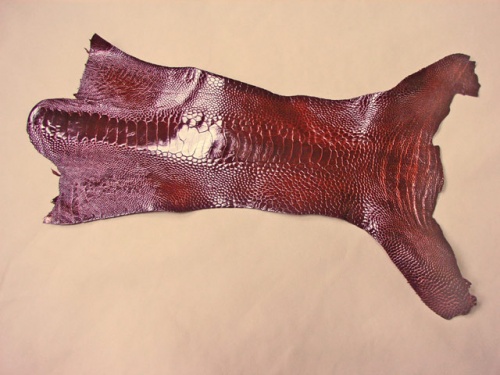Difference between revisions of "Glazing leather"
| Line 5: | Line 5: | ||
==Glazing leather - Glazed leather== | ==Glazing leather - Glazed leather== | ||
| − | In the glazing treatment, the leather surface is compressed by strong friction and pressure so that it becomes smooth and shiny. To achieve a particularly [[Gloss of leather|high gloss finish]], [[finish|non-thermoplastic binders]] are applied to the leather surface, which prevent the leather from becoming soft and sticky during this process. Mostly, casein-based binders are used. The process is carried out by a glazing machine. Nevertheless, the manual effort for the glazing is enormous, which increases the cost of production. | + | In the glazing treatment, the leather surface is compressed by strong friction and pressure so that it becomes smooth and shiny. To achieve a particularly [[Gloss of leather|high gloss finish]], [[finish|non-thermoplastic binders]] are applied to the leather surface, which prevent the leather from becoming soft and sticky during this process. Mostly, casein-based binders are used. The process is carried out by a glazing machine. Nevertheless, the manual effort for the glazing is enormous, which increases the cost of production. Alternatively, the leather is rolled smooth with a metal roller under high pressure. |
High gloss [[crocodile leather]], [[lizard leather]], [[snakeskin]], [[turtle skin|turtle leather]] or [[Ostrich leather|ostrich legs]] are mostly glazed. | High gloss [[crocodile leather]], [[lizard leather]], [[snakeskin]], [[turtle skin|turtle leather]] or [[Ostrich leather|ostrich legs]] are mostly glazed. | ||
Latest revision as of 07:16, 31 July 2023
Glazing leather - Glazed leather
In the glazing treatment, the leather surface is compressed by strong friction and pressure so that it becomes smooth and shiny. To achieve a particularly high gloss finish, non-thermoplastic binders are applied to the leather surface, which prevent the leather from becoming soft and sticky during this process. Mostly, casein-based binders are used. The process is carried out by a glazing machine. Nevertheless, the manual effort for the glazing is enormous, which increases the cost of production. Alternatively, the leather is rolled smooth with a metal roller under high pressure.
High gloss crocodile leather, lizard leather, snakeskin, turtle leather or ostrich legs are mostly glazed.
Glossy leather is otherwise extremely water-sensitive and especially for shoes, a waterproofing final lacquer is applied to make the leather, water-repellent.
Glazed crocodile leather. - Glazed crocodile handbag (DLM - German Leather Museum in Offenbach).
Glazed ostrich leather leg. - Glazed python leather (DLM - German Leather Museum in Offenbach).
Additional information












 a kotori web solution
a kotori web solution